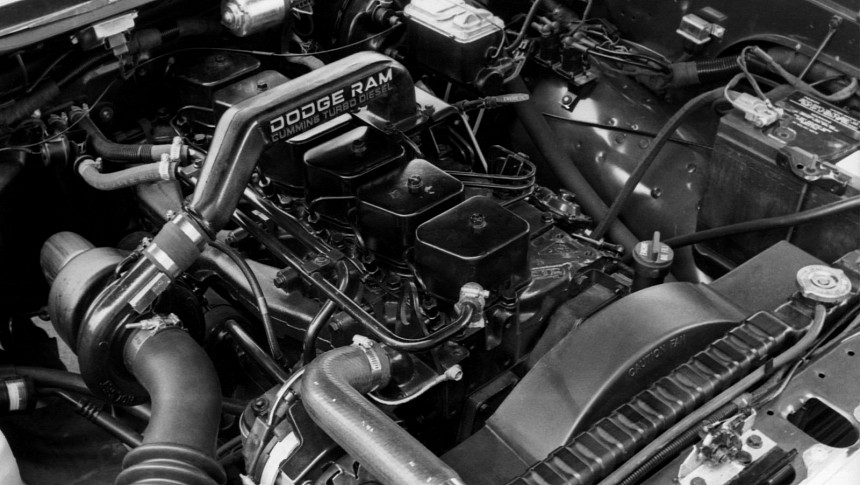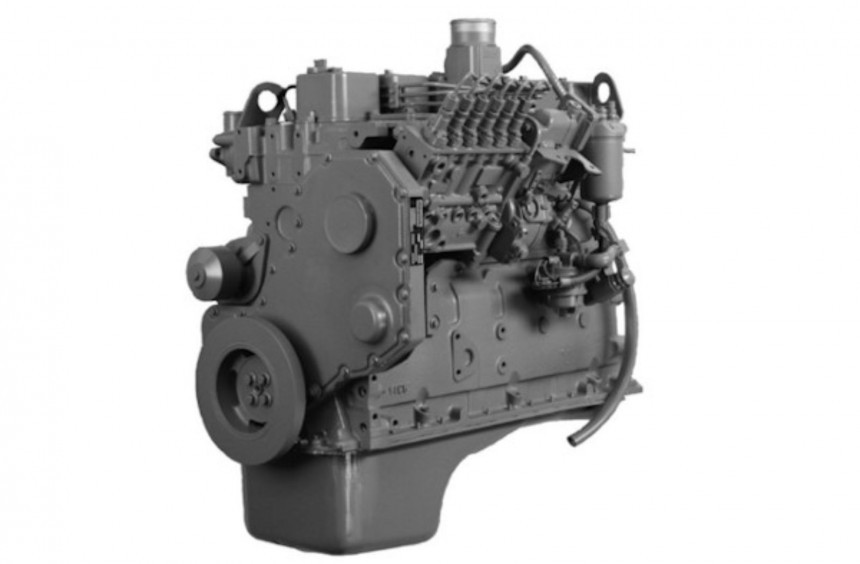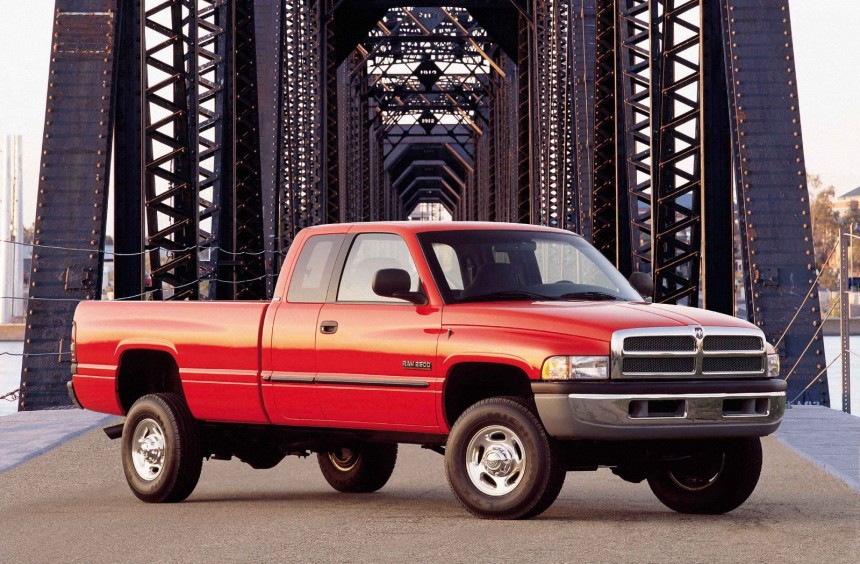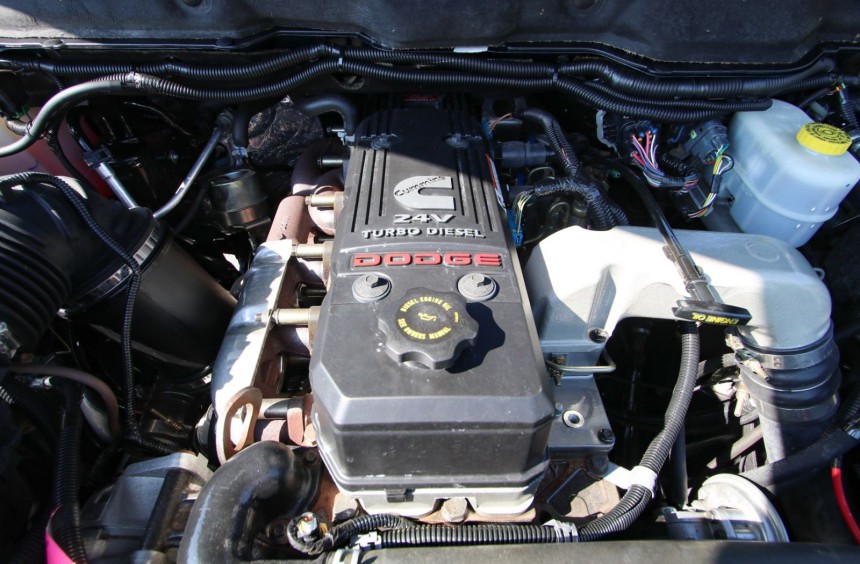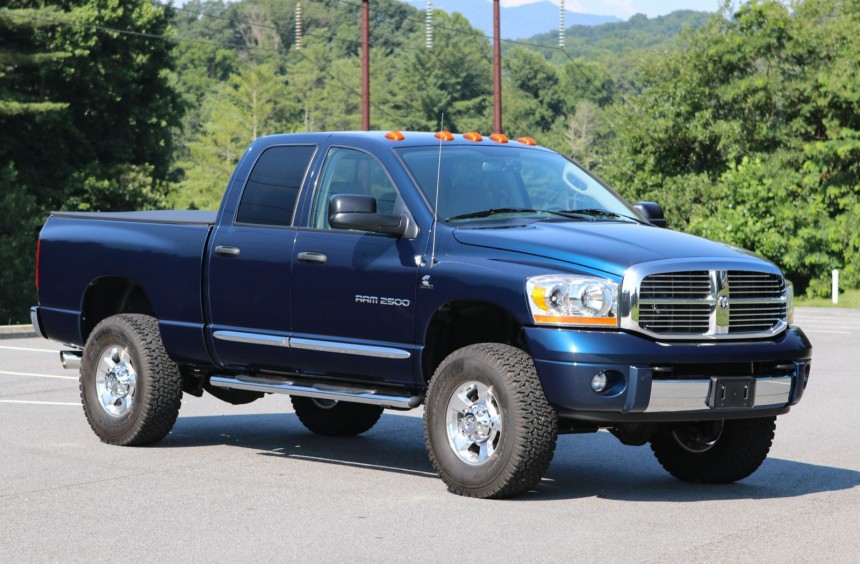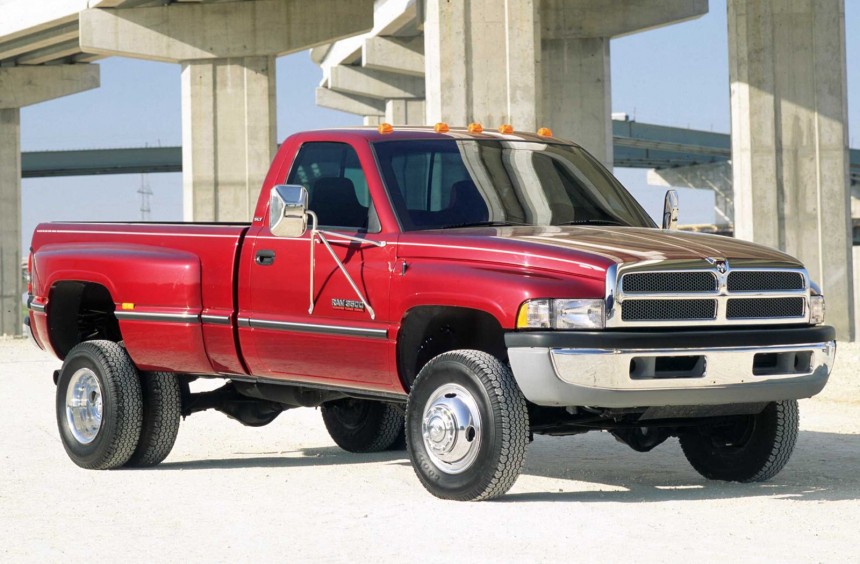When it comes to gas-guzzling engines, the American automotive industry is known for building some of the best V8s of all time. However, US manufacturers have also developed some legendary diesels, and the best of them all remains the 5.9-liter Cummins.
Founded 104 years ago (1909) in Columbus, Indiana, by a bright, young mechanic named Clessie Cummins and banker William Glanton Irwin, the Cummins Engine Company (now Cummins Inc.) started by developing diesel engines - which was a relatively new concept back then -, but it became a successful industry leader several decades later, during the road building boom of the post-WWII era.
Since then, Cummins has been responsible for the best-performing and most reliable diesel engines built in the United States, which a wide range of industries have been relying on.
Unquestionably, its most famous products are the powerplants designed for America's modern-day workhorse: the pickup truck. If we have to single out the best one, it's, without a shred of doubt, the venerable 5.9-liter turbocharged inline-six that powered Ram Ram trucks for nearly two decades.
Part of the B-Series engine family designed for multiple applications, the 5.9-liter made its automotive industry debut in the first-generation Dodge Ram trucks back in 1989 as a fuel-efficient alternative for gas-powered V8s.
With a beefy cast-iron block featuring a forged crank with seven mains, a 12-valve cast-iron cylinder head, and a gear-driven cam drive, it was built to withstand years of hardcore punishment.
The first-gen 5.9-liter Cummins (6BT) wasn't the only diesel engine available for light-duty pickup trucks, but it was a game changer that worked wonders for boosting sales of Ram trucks. Compared to the V8 diesels from Ford and GM, the inline-six was the only unit that featured direct fuel injection courtesy of Bosch. Furthermore, it was sensibly more fuel-efficient and delivered more torque since it ditched natural aspiration for a Holset H1C turbocharger.
Available with either a five-speed manual or a heavy-duty version of the A727 three-speed automatic, it made 160 hp and a whopping 400 lb-ft (542 Nm) of torque.
Built between 1989 and 1993, the 5.9-liter quickly became the go-to choice for all Dodge Ram customers, proving it was the most reliable and fuel-efficient diesel engine available in the light-duty pickup truck segment.
The mighty 5.9-liter got its first significant update in 1994 when the second generation of Ram trucks was introduced. Though it featured the same block, conrods, and 12-valve cylinder head as the initial version, the engine received many upgrades, including redesigned pistons, higher-flow fuel injectors, or an enlarged intercooler that made it better across the board.
However, the most famous upgrade of them all was the replacement of the old camshaft-driven, rotary-style VE injection pump with a new Bosch inline unit codenamed P7100 - better known as the P-pump.
With all the new hardware, the 1994-1998 second-gen became more powerful, reliable, fuel-efficient, and emission-friendly. Depending on the model year and the transmission it was mated to, the engine could crank out up to 215 hp and 440 lb-ft (597 Nm) of torque.
With emission restrictions tightening, at the halfway point of 1998, the 5.9 got its first significant redesign and received a new designation: ISB.
Its cylinder head was reworked and featured four valves per cylinder, while the fuel-injection system was now electronically controlled. The system also gained a new high-pressure electronic rotary pump called Bosch VP44, which became the engine's Achilles heel.
Though the 5.9 generally remained a staple of reliability, and its output increased to 235 hp and 460 lb-ft (624 Nm) of torque (when linked to a manual gearbox), the VP pump had the habit of failing, which was a nagging issue for the legendary engine.
The VP-pump ISB was discontinued after the 2002 model year. However, a year before it rode into the sunset, Dodge offered a high-output version equipped with several improvements, including a bigger Holset HY35W turbocharger. Mated to a bombproof NV5600 six-speed manual, this 5.9 made 245 hp and a massive 505 lb-ft (685 Nm) of torque.
For the second part of the 2002 model year, Dodge introduced the new, third-generation Ram trucks, and several months later, another revised version of the 5.7-liter ISB followed.
This time, the formidable powerplant received a revised block, cylinder head, valve train, turbocharger (since 2003), and injectors. Still, the most significant upgrade was Bosch's innovative high-pressure Common Rail fuel injection system, which also meant a new injection pump codenamed CP3 that proved much more reliable than the VP.
In addition to reliability, fuel efficiency, and output figures increased again. In 2003, the engine's maximum ratings stood at 305 hp and 555 lb-ft (752 Nm) of torque. Then, midway through the 2004 model year, the high-output 5.9 called Cummins 600 made 325 hp and 600 lb-ft (813 Nm) of torque.
The Common Rail ISB 5.9-liter remained available until the end of the 2007 model year. Then it was discontinued entirely, passing the torch to its bigger, more advanced B-Series sibling, the ISB 6.7-liter.
Today, sixteen years after it was discontinued, the 5.9-liter Cummins is arguably the most legendary diesel engine ever produced on American soil.
It's proven more than capable of outliving the trucks it was equipped on, and it's highly sought-after by both Ram fans and diesel enthusiasts who recognize its greatness but argue that it was available on mediocre trucks.
Although it was a workhorse engine, throughout the years, both categories of enthusiasts have realized that the 5.9 had immense tuning potential thanks to its ultra-solid architecture. Thus, they began tuning and swapping it into various trucks (and even cars) for off-road, on-road, and race applications, which led the industry to develop a wide range of aftermarket upgrades.
Thus, 5.9s with significant horsepower and torque gains have become fairly common. For example, extracting around 600 horses and 1,000 lb-ft (1,355 Nm) of torque from a Common Rail ISB is easy, requiring just a remap, a bigger turbo, a higher-pressure lift pump, and higher-flow injectors. But that's not to say that the older 6BT versions are inferior when it comes to power potential. With more comprehensive tuning, the block can handle up to 1,500 hp and around 2,000 lb-ft (2,711 Nm) of torque.
In conclusion, as electrification is taking over, the 5.9-liter Cummins will probably go down as one of the best diesel engines ever built.
Since I mentioned 5.9 swaps into cars, I'll leave you with an awesome YouTube video by Westen Champlin, who installed a heavily-tuned, 1,500-hp 6BT into his Mustang.
Since then, Cummins has been responsible for the best-performing and most reliable diesel engines built in the United States, which a wide range of industries have been relying on.
Unquestionably, its most famous products are the powerplants designed for America's modern-day workhorse: the pickup truck. If we have to single out the best one, it's, without a shred of doubt, the venerable 5.9-liter turbocharged inline-six that powered Ram Ram trucks for nearly two decades.
The game-changer
With a beefy cast-iron block featuring a forged crank with seven mains, a 12-valve cast-iron cylinder head, and a gear-driven cam drive, it was built to withstand years of hardcore punishment.
The first-gen 5.9-liter Cummins (6BT) wasn't the only diesel engine available for light-duty pickup trucks, but it was a game changer that worked wonders for boosting sales of Ram trucks. Compared to the V8 diesels from Ford and GM, the inline-six was the only unit that featured direct fuel injection courtesy of Bosch. Furthermore, it was sensibly more fuel-efficient and delivered more torque since it ditched natural aspiration for a Holset H1C turbocharger.
Available with either a five-speed manual or a heavy-duty version of the A727 three-speed automatic, it made 160 hp and a whopping 400 lb-ft (542 Nm) of torque.
Built between 1989 and 1993, the 5.9-liter quickly became the go-to choice for all Dodge Ram customers, proving it was the most reliable and fuel-efficient diesel engine available in the light-duty pickup truck segment.
Making a great engine even better
However, the most famous upgrade of them all was the replacement of the old camshaft-driven, rotary-style VE injection pump with a new Bosch inline unit codenamed P7100 - better known as the P-pump.
With all the new hardware, the 1994-1998 second-gen became more powerful, reliable, fuel-efficient, and emission-friendly. Depending on the model year and the transmission it was mated to, the engine could crank out up to 215 hp and 440 lb-ft (597 Nm) of torque.
The move to 24 valves
Its cylinder head was reworked and featured four valves per cylinder, while the fuel-injection system was now electronically controlled. The system also gained a new high-pressure electronic rotary pump called Bosch VP44, which became the engine's Achilles heel.
Though the 5.9 generally remained a staple of reliability, and its output increased to 235 hp and 460 lb-ft (624 Nm) of torque (when linked to a manual gearbox), the VP pump had the habit of failing, which was a nagging issue for the legendary engine.
The VP-pump ISB was discontinued after the 2002 model year. However, a year before it rode into the sunset, Dodge offered a high-output version equipped with several improvements, including a bigger Holset HY35W turbocharger. Mated to a bombproof NV5600 six-speed manual, this 5.9 made 245 hp and a massive 505 lb-ft (685 Nm) of torque.
The Common Rail version
This time, the formidable powerplant received a revised block, cylinder head, valve train, turbocharger (since 2003), and injectors. Still, the most significant upgrade was Bosch's innovative high-pressure Common Rail fuel injection system, which also meant a new injection pump codenamed CP3 that proved much more reliable than the VP.
In addition to reliability, fuel efficiency, and output figures increased again. In 2003, the engine's maximum ratings stood at 305 hp and 555 lb-ft (752 Nm) of torque. Then, midway through the 2004 model year, the high-output 5.9 called Cummins 600 made 325 hp and 600 lb-ft (813 Nm) of torque.
The Common Rail ISB 5.9-liter remained available until the end of the 2007 model year. Then it was discontinued entirely, passing the torch to its bigger, more advanced B-Series sibling, the ISB 6.7-liter.
Legacy and tunability
It's proven more than capable of outliving the trucks it was equipped on, and it's highly sought-after by both Ram fans and diesel enthusiasts who recognize its greatness but argue that it was available on mediocre trucks.
Although it was a workhorse engine, throughout the years, both categories of enthusiasts have realized that the 5.9 had immense tuning potential thanks to its ultra-solid architecture. Thus, they began tuning and swapping it into various trucks (and even cars) for off-road, on-road, and race applications, which led the industry to develop a wide range of aftermarket upgrades.
Thus, 5.9s with significant horsepower and torque gains have become fairly common. For example, extracting around 600 horses and 1,000 lb-ft (1,355 Nm) of torque from a Common Rail ISB is easy, requiring just a remap, a bigger turbo, a higher-pressure lift pump, and higher-flow injectors. But that's not to say that the older 6BT versions are inferior when it comes to power potential. With more comprehensive tuning, the block can handle up to 1,500 hp and around 2,000 lb-ft (2,711 Nm) of torque.
In conclusion, as electrification is taking over, the 5.9-liter Cummins will probably go down as one of the best diesel engines ever built.
Since I mentioned 5.9 swaps into cars, I'll leave you with an awesome YouTube video by Westen Champlin, who installed a heavily-tuned, 1,500-hp 6BT into his Mustang.
